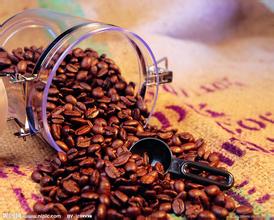Introduction to the characteristics of grinding scale by describing the flavor of coffee in Hope Manor in Colombia
Introduction to the characteristics of grinding scale by describing the flavor of coffee in Hope Manor in Colombia
Ten years ago, most coffee farms in Colombia went all out to sprint production, and when the government advocated the cultivation of high-yield beans with strong disease resistance and discouraged good flavor but low yield, it was hoped that the manor would resolutely embark on the long road of fine coffee.
The opportunity the manor would like to see at that time was "Geisha" (also known as a geisha). After the Panamanian Emerald Manor became famous because of the rediscovery of rose summer in the garden, coffee farms around the world were studying the possibility of planting rose summer, but there was no rose summer variety in Colombia. It was hoped that the manor owner RigobertoHerrera sent the chief botanist HernandoTapasco to Panama to study, rented LaCardeida Farm next door to the Bogut Emerald Manor, and Tapasco himself stayed in Bogut for a year. Thoroughly study the planting and production technology of Rosa rugosa.
In December 2006, the Hope Manor bought the CerroAzul in Colombia's Cauca Valley, the geographical environment is very close to Poquette, the warm air rising from the Cauca Valley and the cold air from the Pacific meet at the manor. The manor has 20 hectares of arable land between 1700 and 1950 meters above sea level, originally planted with Caturra. In September 2007, 35,000 rose summer trees were planted. Unexpectedly, two months later, some of the saplings died, and Rigoberto's brother wanted to give up, thinking that the wind was too cold for planting and should be changed to cattle pasture. Rigoberto refused to admit defeat, insisted on replanting, and planted windbreaks on the top so that the strong wind would not destroy the coffee shrubs.
The rosy summers survived and won the second place in the annual World Coffee Competition of the American Fine Coffee Association in 2012, and the rosy summers of the other two estates of Hope Manor. A total of three places in the top 10: second, third and seventh, creating an incredible treble.
Hope that the manor is different from other manors, with doctoral botanists, three professional cup surveyors, 100 full-time employees, and currently manages a manor under its jurisdiction. The estate is owned by the Herrera brothers. In fact, the grandfather of the Herrera brothers, who ran a coffee farm in the Trujillo district of Colombia, gradually declined, and the two brothers left Colombia. But they did not give up their dream of going back to their hometown to run a coffee farm.
The first estate that Herrera bought when he returned home was Trujillo's LaEsperanza, which is very close to their grandfather's original farm and is now used as a regional headquarters. The manor itself is 100% organic, with a variety of coffee trees including Colombian species, Castillo, Caturra and more than 14000 organic roses. Next, Herrera bought four estates in Trujillo and Caicedonia, north of Trujillo. Together with the LaCardeida estate in Boquete, Panama, which was leased in 2005, it now has six estates and a total coffee planting area of 213 hectares.

Important Notice :
前街咖啡 FrontStreet Coffee has moved to new addredd:
FrontStreet Coffee Address: 315,Donghua East Road,GuangZhou
Tel:020 38364473
- Prev

Introduction of taste characteristics of varieties treated by flavor description of coffee beans in Tanzania
Coffee cloth powder correctly brew the coffee and drink it within ten minutes. Don't believe that your coffee can be kept warm for more than half a day on the "electric heat preservation tray" of the coffee pot! The longer the coffee is laid aside, the flavor will gradually fade away and the taste will go away quietly. After the coffee is made and finished in ten minutes, it is the expert who knows the way to keep the coffee equipment clean at all times. Do not make tea.
- Next

Introduction of Panamanian Coffee Coffee Flavor description method with Sweet aftertaste
The story of the Panamanian coffee bean Hartman is as legendary as its coffee. Hartman Manor is located in Chilidge, Santa Clara. The founder's name is Ellis Strauss Hartman. He was born on June 20, 1891 in the Moravilla region of Austria and Hungary in what is now the Czech Republic, and died on May 25, 1970 at the age of 78. Today's
Related
- Detailed explanation of Jadeite planting Land in Panamanian Jadeite Manor introduction to the grading system of Jadeite competitive bidding, Red bid, Green bid and Rose Summer
- Story of Coffee planting in Brenka region of Costa Rica Stonehenge Manor anaerobic heavy honey treatment of flavor mouth
- What's on the barrel of Blue Mountain Coffee beans?
- Can American coffee also pull flowers? How to use hot American style to pull out a good-looking pattern?
- Can you make a cold extract with coffee beans? What is the right proportion for cold-extracted coffee formula?
- Indonesian PWN Gold Mandrine Coffee Origin Features Flavor How to Chong? Mandolin coffee is American.
- A brief introduction to the flavor characteristics of Brazilian yellow bourbon coffee beans
- What is the effect of different water quality on the flavor of cold-extracted coffee? What kind of water is best for brewing coffee?
- Why do you think of Rose Summer whenever you mention Panamanian coffee?
- Introduction to the characteristics of authentic blue mountain coffee bean producing areas? What is the CIB Coffee Authority in Jamaica?

